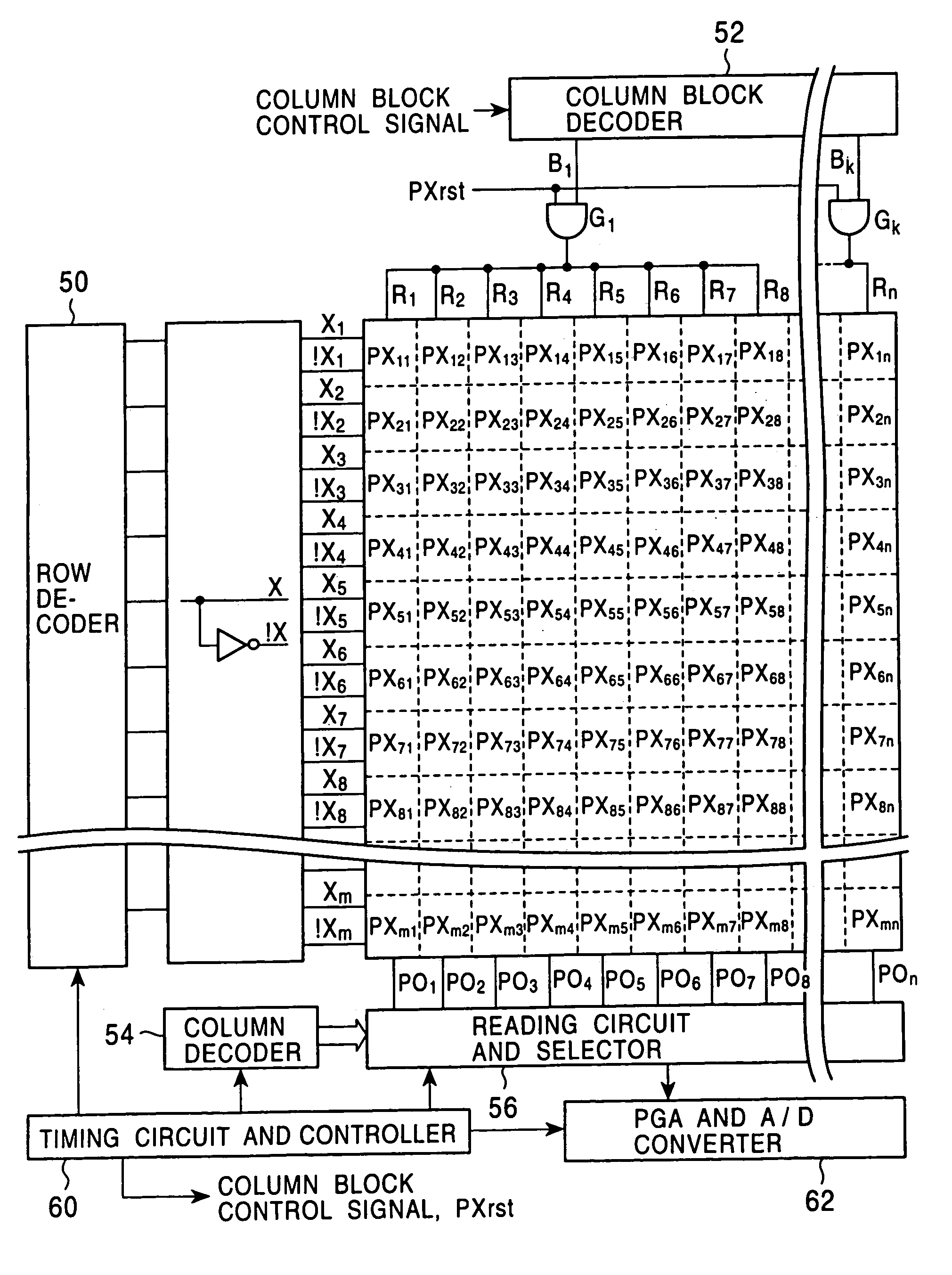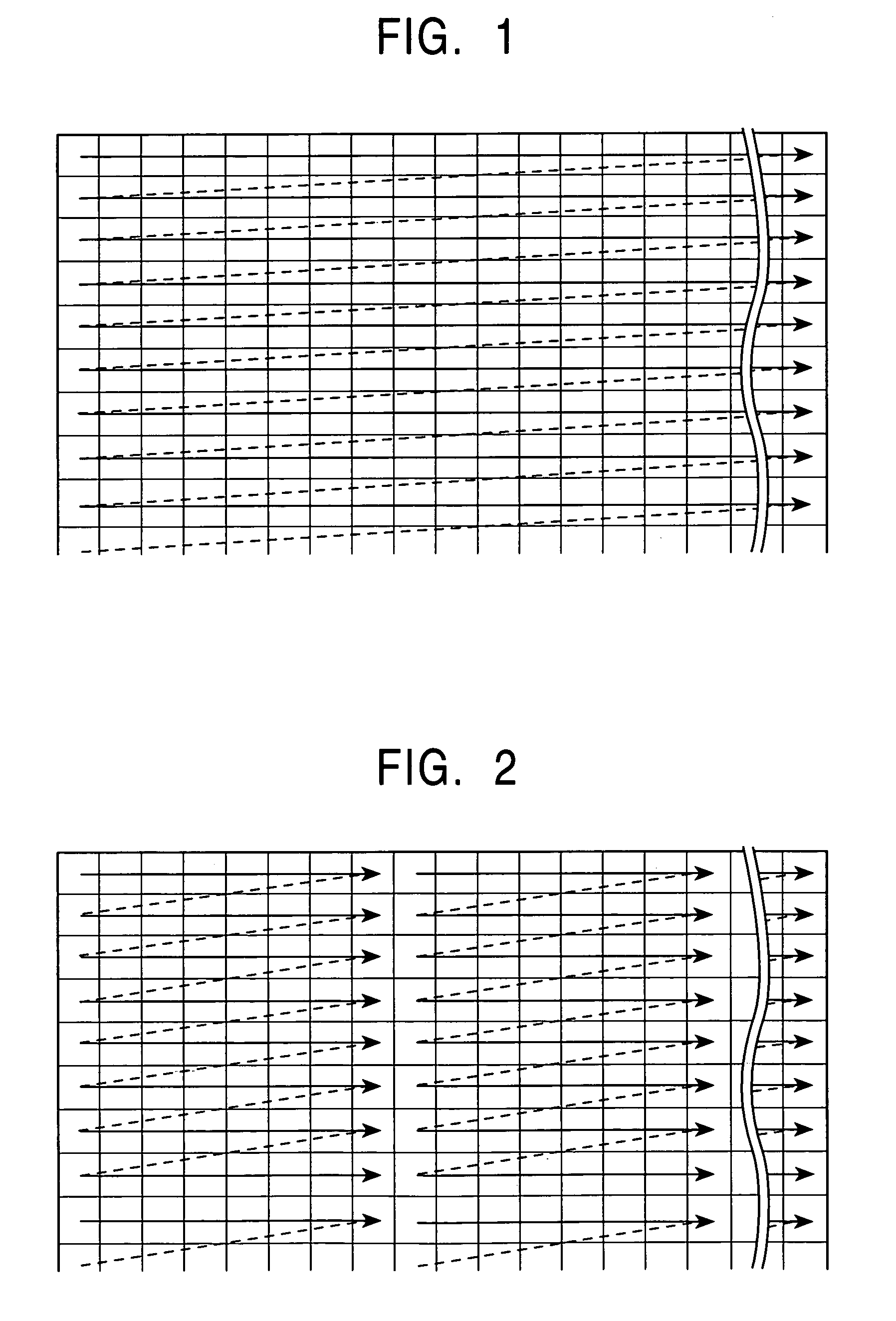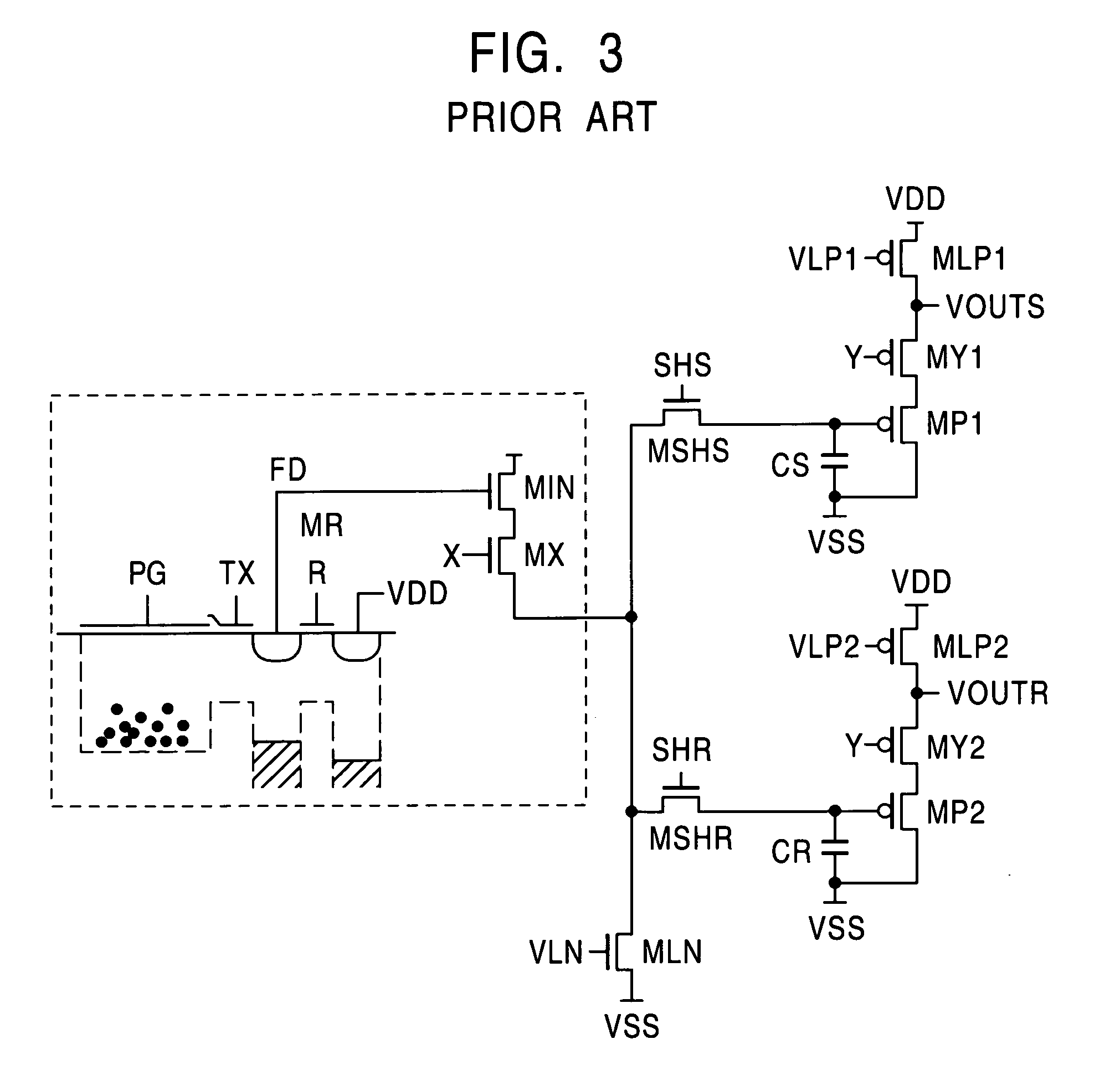CMOS image sensor having block scanning capability
a technology of image sensor and scanning capability, applied in the field of cmos image sensor, can solve the problems of large random noise, inability to read on a block-by-block basis, and inability to reset the photodiode, and achieve the effect of reducing random nois
- Summary
- Abstract
- Description
- Claims
- Application Information
AI Technical Summary
Benefits of technology
Problems solved by technology
Method used
Image
Examples
Embodiment Construction
[0054]The present invention is described below in detail with reference to preferred embodiments in conjunction with the accompanying drawings.
[0055]In circuit design and layout design for a pixel sensor, which is a unit of an area sensor, the following issues should be considered:[0056](1) The quantum efficiency should be sufficiently large. To this end, one important factor is a large aperture ratio.[0057](2) Random noise, which can cause a problem in particular in a CMOS image sensor, should be minimized.[0058](3) In order to fit a great number of pixel sensors in the form of an array, the size of each pixel sensor should be as small as possible.[0059](4) To minimize the size of the pixel sensor, each pixel sensor includes a single well and a single transistor.[0060](5) The number of elements, such as transistors, should be minimized.[0061](6) The number of interconnections to each pixel sensor should be minimized.[0062](7) An irregular arrangement of pixels causes spatial distor...
PUM
 Login to View More
Login to View More Abstract
Description
Claims
Application Information
 Login to View More
Login to View More - R&D
- Intellectual Property
- Life Sciences
- Materials
- Tech Scout
- Unparalleled Data Quality
- Higher Quality Content
- 60% Fewer Hallucinations
Browse by: Latest US Patents, China's latest patents, Technical Efficacy Thesaurus, Application Domain, Technology Topic, Popular Technical Reports.
© 2025 PatSnap. All rights reserved.Legal|Privacy policy|Modern Slavery Act Transparency Statement|Sitemap|About US| Contact US: help@patsnap.com



